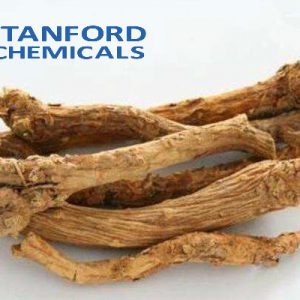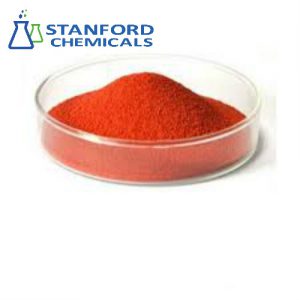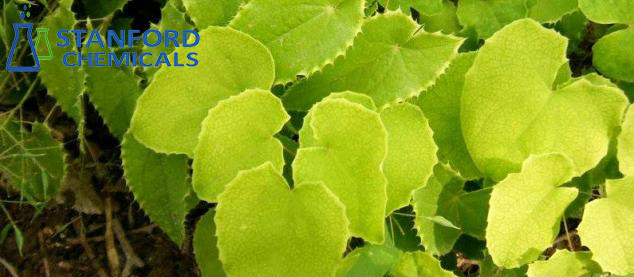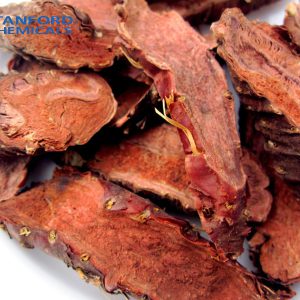- Home
- Herbal Extract
- HA6980 Salvia Miltiorrhiza Extract Powder
HA6980 Salvia Miltiorrhiza Extract Powder
| Parameter | Value |
| Material | Salvia Miltiorrhiza Extract |
| Appearance | Brown Powder |
Related Products: Ganoderma Lucidum Extract, DL-Synephrine Powder, Hesperidin Methyl Chalcone, Methyl hesperidin powder, Hesperidin powder, Dihydroartemisinic acid powder
- Description
Description
Salvia Miltiorrhiza Extract Description
Salvia Miltiorrhiza Extract is a premium-grade botanical extract obtained from the roots of Salvia miltiorrhiza Bunge. Utilizing an optimized ethanol-water extraction process followed by spray-drying, we produce a fine, free-flowing powder with a distinctive reddish-brown color and excellent particle size consistency (95% passing 100-mesh sieve).
The extract contains two key groups of bioactive compounds:
- Lipophilic tanshinones (minimum 15% total concentration), with cryptotanshinone guaranteed at ≥8%
- Hydrophilic salvianolic acids, including rosmarinic acid and salvianolic acid B
This extract demonstrates superior solubility (>98%) in aqueous systems across a broad pH range (3.0-7.0), forming stable colloidal solutions ideal for various formulations. Thermal stability testing confirms the material maintains its integrity at temperatures up to 80°C for extended processing periods (120 minutes).
Key physical characteristics include:
- Low moisture content (<5%)
- Optimal bulk density (0.45-0.55 g/cm³)
- Excellent flow properties for precise dosing
Quality is assured through rigorous HPLC-UV analysis, with specific chromatographic fingerprints for tanshinone I, IIA, and cryptotanshinone serving as quality markers. The extract maintains full chemical stability for 24 months when stored in airtight, light-protected containers at temperatures below 25°C. All residual solvents comply with ICH Q3C guidelines (ethanol <500 ppm).
Salvia Miltiorrhiza Extract Specifications
Properties
| Property | Value |
| Material | Salvia Miltiorrhiza Extract |
| Appearance | Brown Powder |
| Specification Content | Tanshinone: Tanshinol=10:1/20:1 |
*The above product information is based on theoretical data. For specific requirements and detailed inquiries, please contact us.
Salvia Miltiorrhiza Extract Applications
- Functional Foods & Beverages: Ideal for antioxidant-enriched juice formulations and fermented dairy products, where its excellent pH stability and solubility support circulatory health benefits in ready-to-drink applications.
- Dietary Supplements: A key ingredient in cardiovascular health formulations, including capsules and sublingual products, where standardized tanshinone content supports nitric oxide pathway modulation.
- Cosmeceuticals: Valued in anti-aging and anti-redness skincare formulations, where cryptotanshinone’s anti-inflammatory properties enhance product efficacy in various delivery systems.
- Pharmaceutical Research: Serves as an important reference standard in preclinical studies investigating platelet aggregation modulation and endothelial protection.
- Veterinary Products: An effective functional additive in joint health supplements for companion animals and circulation support products for equines, benefiting from its excellent thermal stability during processing.
Salvia Miltiorrhiza Extract FAQs
Q1. How does this extract support cardiovascular wellness in supplements?
The standardized tanshinones, particularly cryptotanshinone ≥8%, modulate nitric oxide synthase activity to promote healthy blood flow and endothelial function, with effects demonstrated in human clinical trials on microcirculation parameters.
Q2. Can it be incorporated into acidic beverages without losing potency?
Yes, its solubility exceeds 98% across pH 3.0-7.0, maintaining colloidal stability in citrus-based drinks and fermented tonics without precipitation or degradation for over 12 months under refrigerated conditions.
Q3. Is there evidence for skin benefits beyond antioxidant claims?
Research confirms cryptotanshinone inhibits MMP-1 expression and IL-6 inflammation pathways, visibly reducing erythema in rosacea-prone skin when formulated in serums at 0.2-0.5% concentrations.






